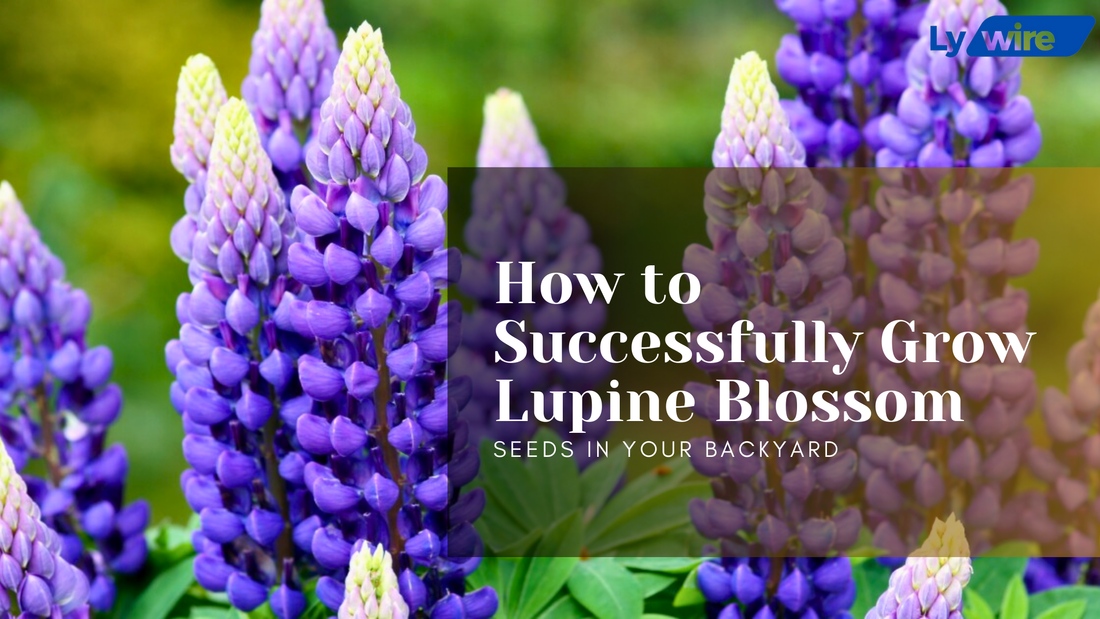
Growing lupine flowers (Lupinus) in your backyard can be a rewarding experience, as these vibrant plants add beauty and color to any garden. Known for their tall spikes of colorful blossoms, lupines are not only visually appealing but also attract pollinators like bees and butterflies. This comprehensive guide will provide you with all the necessary steps and tips to successfully grow lupine seeds in your backyard.
Understanding Lupines
Lupines are perennial flowering plants that belong to the legume family. They are native to North America and thrive in various climates, making them a popular choice for gardeners. The flowers bloom in a range of colors, including blue, purple, pink, and white, creating a stunning display in gardens during late spring and early summer.

Choosing the Right Lupine Variety
Before planting, it's essential to choose the right variety of lupine for your garden. Some popular types include:
- Texas Bluebonnet: The state flower of Texas, known for its striking blue blooms.
- Russell Hybrid: A mix of colors that produces tall spikes of flowers.
- Perennial Lupines: These return year after year and can be propagated easily from seeds.
Optimal Growing Conditions for Lupines
Lupines prefer specific growing conditions to thrive:
- Soil: Well-drained, slightly acidic soil is ideal. Avoid heavy clay soils unless amended.
- Sunlight: Full sun is preferred, with at least six hours of direct sunlight daily. They can tolerate partial shade but may produce fewer blooms.
- Temperature: Lupines thrive in cooler temperatures (50°F to 70°F). They may go dormant during hot summer months but will rebound when temperatures drop.
Preparing to Plant Lupine Seeds
- Scarification: Lupine seeds have a hard outer shell that can hinder germination. To enhance germination rates, scarify the seeds by nicking them with a knife or rubbing them with sandpaper. This process allows water to penetrate the seed coat.
- Soaking: After scarification, soak the seeds in warm water for 24 hours. This helps to soften the seed coat further and promotes faster germination.
- Timing: The best time to plant lupine seeds is either in early spring or late fall. Planting in fall allows for winter germination, while spring planting gives seeds time to establish before blooming.
Planting Lupine Seeds
- Site Preparation: Choose a sunny location in your garden with well-drained soil. Loosen the soil to a depth of about 12-18 inches to accommodate the deep taproots of lupines.
- Sowing Seeds: Plant the seeds about ¼ inch deep and space them approximately 2 inches apart. Cover them lightly with soil and water gently until the soil is evenly moist.
- Mulching: After sowing, apply a layer of mulch around the area to retain moisture and suppress weeds.
Caring for Lupine Seedlings
Once your lupine seeds have been planted, proper care is essential for healthy growth:
- Watering: Keep the soil consistently moist but not soggy. Water during dry spells but avoid overwatering, as this can lead to root rot.
- Fertilization: Generally, lupines do not require heavy fertilization; however, using an acidifying fertilizer high in phosphorus can promote blooming.
- Weed Control: Regularly check for weeds that may compete with your lupines for nutrients and water.
Transplanting Seedlings
If you started your seeds indoors or in trays, transplanting them into your garden requires careful handling:
- Timing: Transplant seedlings after the last frost date when they are about 4-6 inches tall.
- Hardening Off: Gradually acclimate seedlings to outdoor conditions by placing them outside for a few hours each day over a week.
- Transplanting Technique: Be gentle when removing seedlings from their containers to avoid disturbing their roots. Plant them at the same depth they were growing in their containers.
Common Challenges When Growing Lupines
While growing lupines can be straightforward, there are some challenges you may encounter:
- Pests and Diseases: Watch out for aphids and fungal diseases like powdery mildew. Use organic insecticides or fungicides if necessary.
- Root Disturbance: Lupines do not transplant well due to their long taproots; it’s best to plant them directly into their permanent location whenever possible.
:max_bytes(150000):strip_icc()/growing-lupine-flowers-1316034-11-4966d1a9859647b7abe04586df91c012.jpg)
Harvesting Seeds
Once your lupines have bloomed and produced seed pods, you can collect seeds for future planting:
- Wait until the pods turn brown and dry on the plant.
- Carefully cut the pods open and collect the seeds inside.
- Store seeds in a cool, dry place until you are ready to plant them again.
Growing lupine blossoms from seed can be a fulfilling project that enhances your backyard's beauty while supporting local wildlife. By following these guidelines on preparation, planting, care, and harvesting, you will be well on your way to enjoying vibrant lupine flowers in your garden year after year. With patience and attention to detail, your efforts will reward you with stunning blooms that bring joy throughout the growing season.
By cultivating these hardy plants successfully, you not only beautify your space but also contribute positively to the environment by attracting pollinators and enriching biodiversity in your local ecosystem. Happy gardening!


